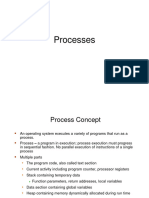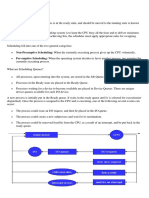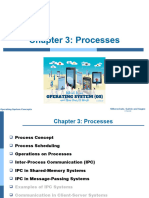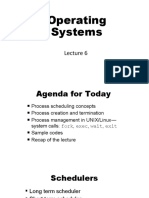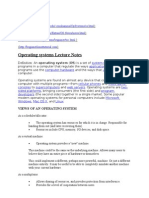0% found this document useful (0 votes)
11 views42 pagesCMPE382-Lecture03 Process
The document provides a comprehensive overview of operating systems and processes, detailing the various states a process can be in, such as new, running, waiting, ready, and terminated. It explains the roles of the Process Control Block (PCB) and the different types of schedulers (short-term, mid-term, long-term) involved in process management. Additionally, it covers process creation, termination, and the use of system calls like fork() and exec() in UNIX-like operating systems.
Uploaded by
bertankaankayaCopyright
© © All Rights Reserved
We take content rights seriously. If you suspect this is your content, claim it here.
Available Formats
Download as PDF, TXT or read online on Scribd
0% found this document useful (0 votes)
11 views42 pagesCMPE382-Lecture03 Process
The document provides a comprehensive overview of operating systems and processes, detailing the various states a process can be in, such as new, running, waiting, ready, and terminated. It explains the roles of the Process Control Block (PCB) and the different types of schedulers (short-term, mid-term, long-term) involved in process management. Additionally, it covers process creation, termination, and the use of system calls like fork() and exec() in UNIX-like operating systems.
Uploaded by
bertankaankayaCopyright
© © All Rights Reserved
We take content rights seriously. If you suspect this is your content, claim it here.
Available Formats
Download as PDF, TXT or read online on Scribd
/ 42
